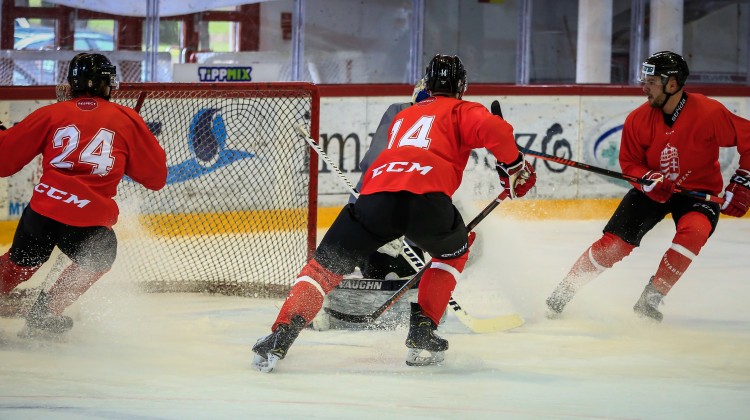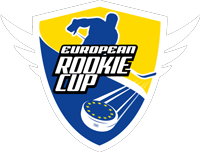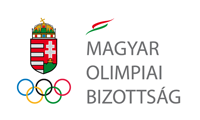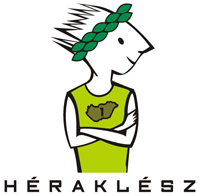Bill Beaney from USA Hockey was at the Hungarian Ice Federation as he held a presentation on 3 on 3 hockey and the benefits of it as well as the future of the sport at the international level.

Bill Beaney hails from Lake Placid New York and played college hockey at the University of New Hampshire, he started coaching hockey after college at the highschool and prep school level before moving on to college hockey. He was the head coach at New England College and then Middlebury College starting in 1986 up through 2015. He has also been working with USA Hockey where he currently is a consultant and he runs a number of clinics throughout the year.
Beaney talked about how he got involved in coaching. “I ended knowing what I wanted to do, and I knew that I wanted to get into coaching, I felt that I had reached my potential as a player. There is always a league that you can play in but I wanted to get a job and to get better at teaching and coaching”
Beaney is also considered the top hockey mind at USA Hockey in skill development as well as working with 3 on 3 hockey in the United States. “I really got involved in 3 on 3 hockey when I was at the college level when I also coached soccer. I noticed that game of soccer has principles that can be used in hockey as well such as support and being able to recognize space and time. My suggestion to other coaches is not to be afraid to to new things. If the players are playing games they will be learning. If you adjust the games then you will be able to teach them what you think they need to learn.”
Currently a number of sports have an an “alternative” version of it that is also at a high level or athletes compete at the professional level. Just to name a few for soccer there is a futsal, for volleyball there is beach volleyball, rugby has rugby sevens, american football as arena football and for basketball there is 3 on 3 basketball. A number of the alternative versions are also competed at, at the Olympic Games, with 3 on 3 basketball to debut at the next summer games. Taking this all into consideration 3 on 3 hockey has a chance to be added to the Winter Olympics as the next possible team sport.
“If 3 on 3 hockey makes it to the Olympics and is able to stick more non traditional hockey countries would be able to compete for a medal because they are not forced to have the depth of quality players that might be needed to have five on five hockey.” said Beaney with regards to the sport at the international stage.
In Canada currently there is a 3 on 3 league which actual is more of a tour where the teams travel to multiple cities throughout Canada and play a single elimination tournament. The teams have players who have played at the highest level. Last year former Stanley Cup champion and Fehérvár player Ric Jackman played as well as former NHL players Karl Stewart, Chris Minard, Luca Caputi, Jason Williams and Jason Foy, also former Fehérvár player Justin Dacosta former Ferencváros player Mike Schwindt. The NHL has implemented 3 on 3 hockey in the All-Star game as well. This of course is played on a large sheet of ice, however the roots of this comes from 3 on 3 on a small ice surface, about the size of one zone.
“The NHL All-Star game has switched to 3 on 3 as well, even though it is played on a larger surface it will be an absolute help to bring 3 on 3 to the public.” said Beaney. “The idea of switching hockey to being played on 4 on 4 has been brought up as well because the ability, skills and speed of the players has improved so much that 5 on 5 is crowded and dangerous. It looks like everything is trending towards less players being on the ice in hockey.”
In Hungary 3 on 3 hockey on a smaller ice surface gives a chance for small towns or teams to have a chance to play organized hockey and also play at a higher level than at U8, U10 and U12 possibly moving up to U14 and U16. There is also an advantage to this in teaching the game of hockey. Kids like to be moving in 3 on 3 hockey you get to touch the puck more often than 5 on 5. You learn quick decision making, spacial awareness and play the puck in a small area. In most hockey practices coaches are are already doing drills with 3 against 3 or 4 against 4, to work on particular aspects of the game. It has been well documented that Auston Matthews started his hockey career not in a hockey hotbed and not on a traditional sheet of ice, however he was a rink rat as he was always hanging around the ice rink in trying to get a chance to play. Beaney also gave a great point on this as well with everyone played 3 on 3 hockey throughout their life. “I would tell you that very few NHL players have never played 3 on 3 hockey growing up at least one time. They did it on the pond, on the street or at the rink, they have all done this on a regular basis growing up.”
Beaney also talked about how a 3 on 3 league at the senior level could also be useful since aside from the 3 on 3 tour in Canada there is not official league anywhere in the world. “The rules on minor league basketball has been adjusted to help the players be able to transition to the NBA. With 3 on 3 hockey, a league could be created where there are a set of rules that help the players attain the skills that they would need to make the jump to the next level. We might have to be creative but I think this could be appealing t the older pro player might be able play well in the smaller rink because they have the hockey brain but might not physically be able to keep up on the large size rink. These veterans could help the young guys slow down and learn how to see the game of hockey better.”
Beaney did add how top league could be a viable option in the long run. “I think there is a potential that in the long run maybe 20-30 years from now to have a professional like leagues to be around. 3 on 3 hockey creates continues excitement that will have an appeal not just for the players but for the fans who are looking for that kind of excitement. How we shape it will be an interesting question. I like at this as a place to have freer play compared to the traditional 5 on 5 hockey. If we look at the pond hockey tournaments that are in North America and the amount of money that is made in those I cannot believe that with the sponsorships involved the money won’t eventually trickle down to the players. Once that happens it will ignite the opportunities. If we go with the pond hockey format you could have teams with sponsor names, such as Labatt beer team, a Budweiser team, Microsoft could have a team and so on. These teams would play for a championship which would be televised.”
The opportunity for 3 on 3 hockey in Hungary has potential to be viable not just for kids. Is the ice surfaces are a available throughout the country as it is a way to prepare for the offseason and eventually be able to compete at the highest level once the sport takes off. “The top pro players in the world play 3 on 3 hockey during the summers in a preparation for the upcoming season. Our goal should be to get young people an opportunity to play a fast paced high level game where their skills are continually improving and they are getting great joy from playing. It is like 5 on 5 soccer or 3 on 3 basketball in the future.”
In closing Bill Beaney what he thinks could happen in Hungary. “I truly believe that Hungary could be a leader in 3 on 3 hockey and to be on the forefront of this sport.”






